Emery S. Johnson House (1853)
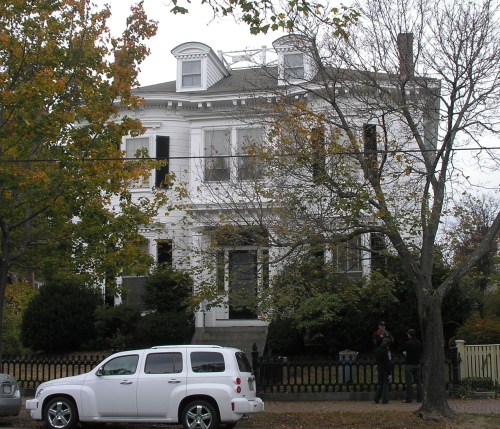
Emery S. Johnson was a Salem merchant and shipmaster. An Italianate house was erected for him at 360 Essex Street in Salem in 1853. The house was deigned by Salem architects William H. Emmerton and Joseph C. Foster.

Emery S. Johnson was a Salem merchant and shipmaster. An Italianate house was erected for him at 360 Essex Street in Salem in 1853. The house was deigned by Salem architects William H. Emmerton and Joseph C. Foster.
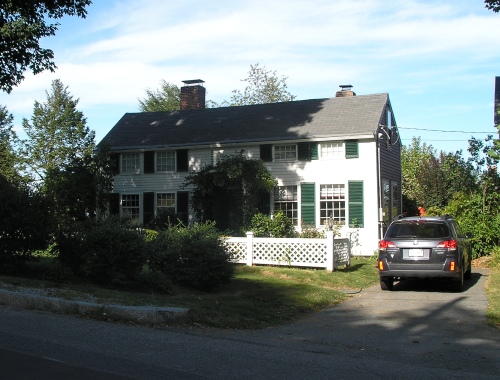
The Young House, at 1 Fairbank Street in Harvard, was built in the early nineteenth century, although the exact date is unknown. In 1825, the property was sold by John P. Whitcomb to cordwainer William Lewis, who sold it to James Young in 1836. Young then transferred it to Dr. Samuel Young , who was probably his uncle. As described in the History of the Town of Harvard (1894), Vol. 2, by Henry Stedman Nourse, Dr. Young was
born in Athol August 12, 1782, son of Lt. Samuel and Lois (Sanderson) Young. Dr. Young was a graduate of Williams College, 1804, and practiced in Athol and Lowell before coming to Harvard. He lived for about thirty years in a house yet standing upon the east side of the common, where he died March 30, 1845. One of his legs being much shorter than the other, he walked with a cane. He was the last of the old-style doctors, paying his visits on horseback, his stock of medicines borne in saddlebags before him.
In the mid-nineteenth century the house was owned by his daughter Seraphina and her husband Hiram Joy and was called Joy Cottage. The house passed among female descendents until 1985.
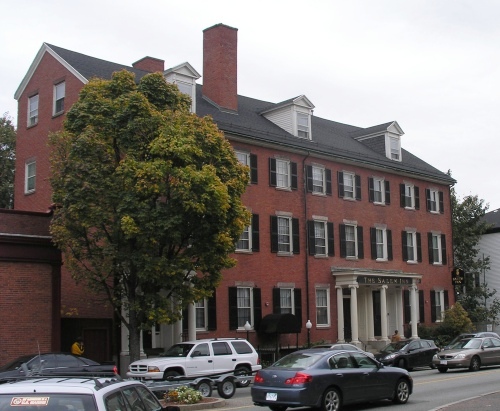
Erected circa 1833-1834 is a triple house at 5-9 Summer Street in Salem. It was built as an investment by Capt. Nathaniel West, who lived in one of the three units. The house is now part of The Salem Inn. Capt. West had been involved in an infamous scandal when he was divorced from his wife, Elizabeth Derby West, in 1806. In the trial he had lost to her his estate in Danvers, Oak Hill, but later reacquired part of it after her death. He moved it to Salem where it became the front section of the Philips House on Chestnut Street.
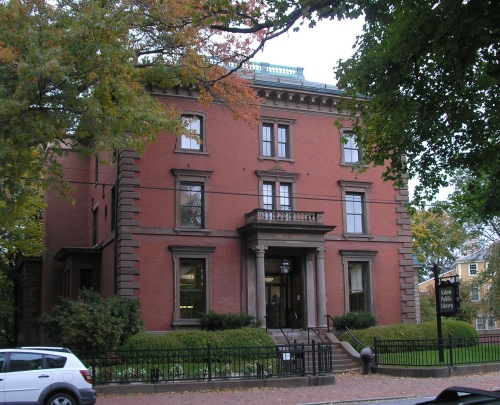
The building that today houses the Salem Public Library (370 Essex Street in Salem) was originally built in 1855 as a house for Capt. John Bertram (1795-1882), designed in the Renaissance Revival style by Salem architects William H. Emmerton and Joseph C. Foster. Known as the Bertram-Waters House, in 1887 it was donated by Capt. Bertram’s heirs to the city to become a library. The building was remodeled inside for that purpose in 1888-1889 and additional wings were constructed in 1911-1912.
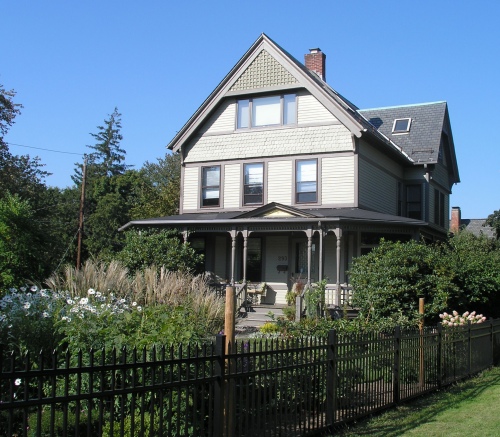
Lewis J. Dudley was a prominent citizen of Northampton who built the Queen Anne house at 293 Elm Street sometime between 1891 and 1895. He may be the same Lewis J. Dudley who was the principal and owner of Northampton Collegiate Institute, a private school for boys, and the president of the Clarke School For The Deaf. Frances T. Krause bought the house in 1918 and Dr. David Koffman, the “Singing Chiropractor,” in 1974.

The French Second Empire house at 8 Ayer Road in Harvard was built in 1869 on the site of the Bigelow-Willard House, which was moved at 18 Ayer Road. The house was built by George H. Fletcher (b. 1833) and his wife, who moved to Clinton in the 1880s. The house was then occupied by tenants until it was acquired by Emily E. Hildreth, who made alterations the building, which included erecting the two-story entrance porch. Hildreth called the house Sunny Side and held weekly summer lectures there from 1888 to 1910. Miss Hildreth‘s sister, Mrs. F. E. Farwell next lived in the house, which was sold in the 1930s to the Dodge family.

For seven months in 1843-1844, a farmhouse in the Town of Harvard served as the home of the Utopian agrarian commune called Fruitlands. Founded by Bronson Alcott and Charles Lane and based on Transcendentalist principles, the experiment was not a success, failing due to the participants‘ inability to grow sufficient food. Alcott soon moved his family, including his daughter, the future author Louisa May Alcott, back to Concord, where he later purchased Orchard House to be the family home.
After the commune broke up, its land was bought by one of its former members, Joseph Palmer, who for 20 years used it as a refuge for reformers called Freelands. Clara Endicott Sears bought the property in 1910 and opened it as a museum in 1914. It is today part of the Fruitlands Museum. The farmhouse is described in its National Register of Historic Places nomination as typical of the late eighteenth-century. The Historic American Buildings Survey documentation describes it as an early 18th century farmhouse. The Fruitlands Museum website describes it as having been built in 1825.